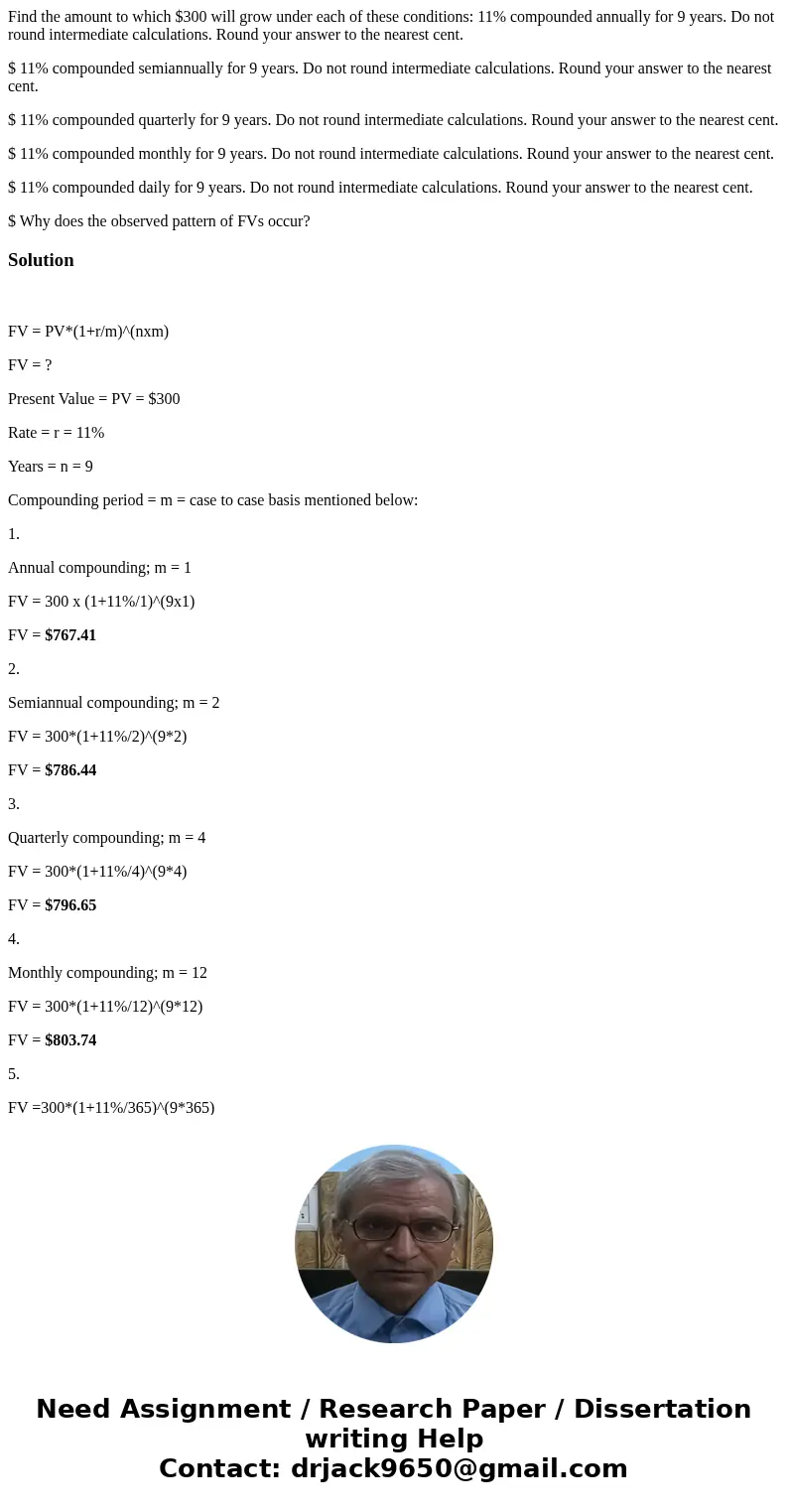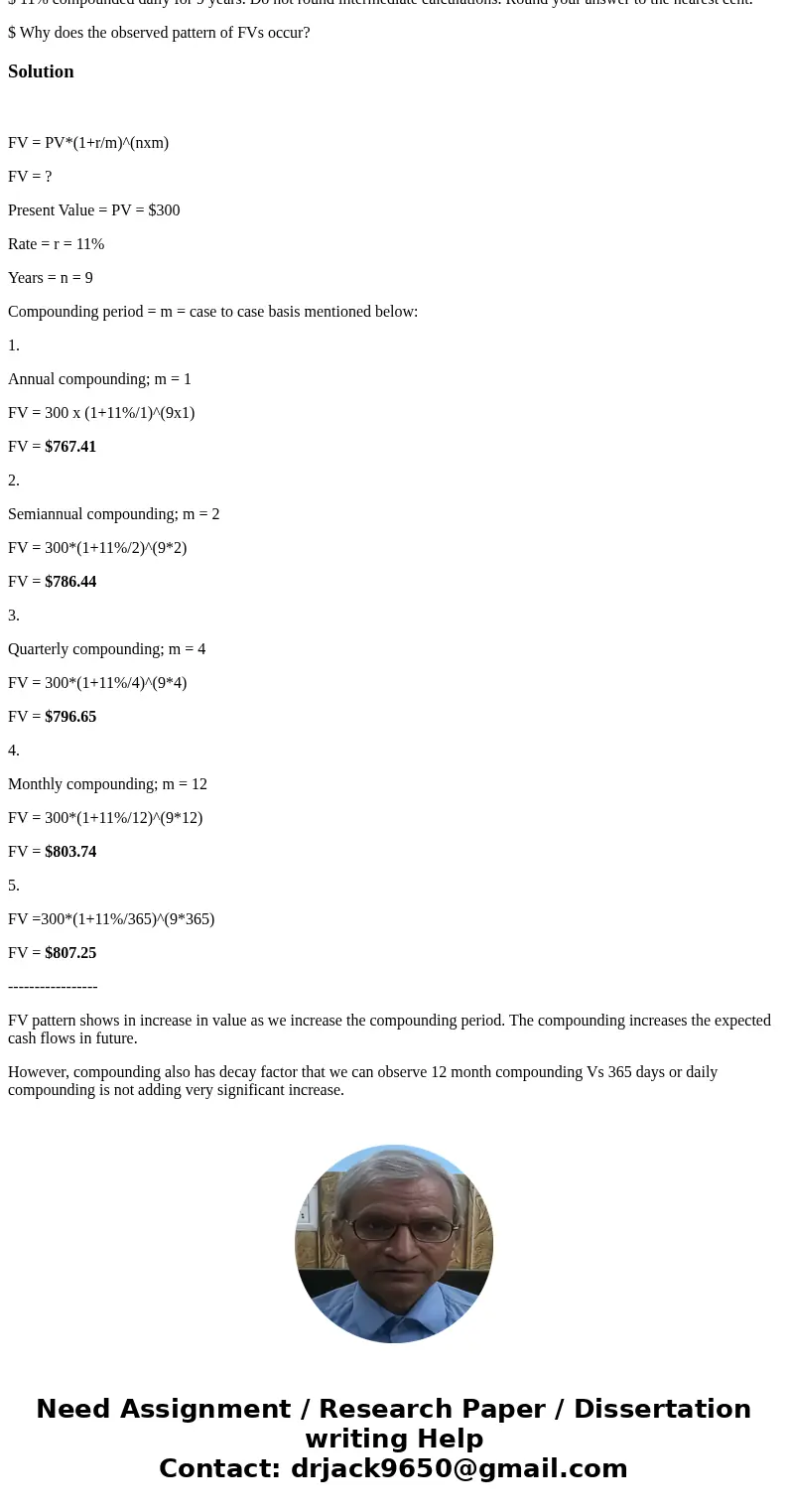Find the amount to which 300 will grow under each of these c
Find the amount to which $300 will grow under each of these conditions: 11% compounded annually for 9 years. Do not round intermediate calculations. Round your answer to the nearest cent.
$ 11% compounded semiannually for 9 years. Do not round intermediate calculations. Round your answer to the nearest cent.
$ 11% compounded quarterly for 9 years. Do not round intermediate calculations. Round your answer to the nearest cent.
$ 11% compounded monthly for 9 years. Do not round intermediate calculations. Round your answer to the nearest cent.
$ 11% compounded daily for 9 years. Do not round intermediate calculations. Round your answer to the nearest cent.
$ Why does the observed pattern of FVs occur?
Solution
FV = PV*(1+r/m)^(nxm)
FV = ?
Present Value = PV = $300
Rate = r = 11%
Years = n = 9
Compounding period = m = case to case basis mentioned below:
1.
Annual compounding; m = 1
FV = 300 x (1+11%/1)^(9x1)
FV = $767.41
2.
Semiannual compounding; m = 2
FV = 300*(1+11%/2)^(9*2)
FV = $786.44
3.
Quarterly compounding; m = 4
FV = 300*(1+11%/4)^(9*4)
FV = $796.65
4.
Monthly compounding; m = 12
FV = 300*(1+11%/12)^(9*12)
FV = $803.74
5.
FV =300*(1+11%/365)^(9*365)
FV = $807.25
-----------------
FV pattern shows in increase in value as we increase the compounding period. The compounding increases the expected cash flows in future.
However, compounding also has decay factor that we can observe 12 month compounding Vs 365 days or daily compounding is not adding very significant increase.


 Homework Sourse
Homework Sourse